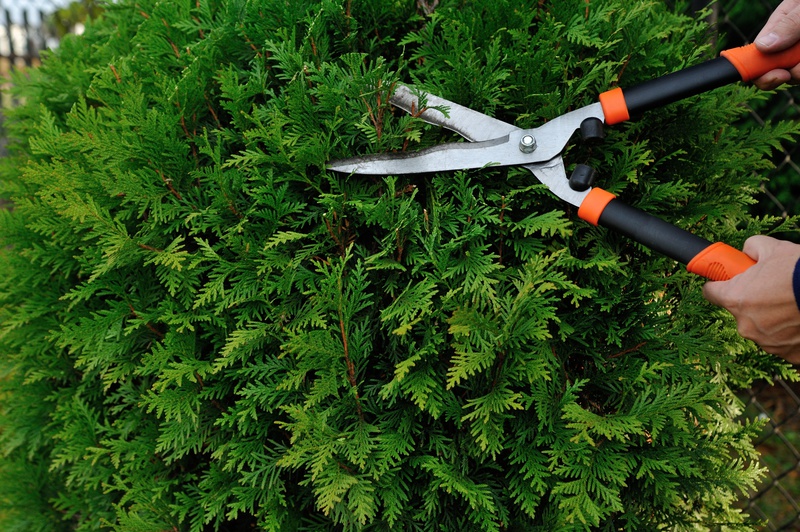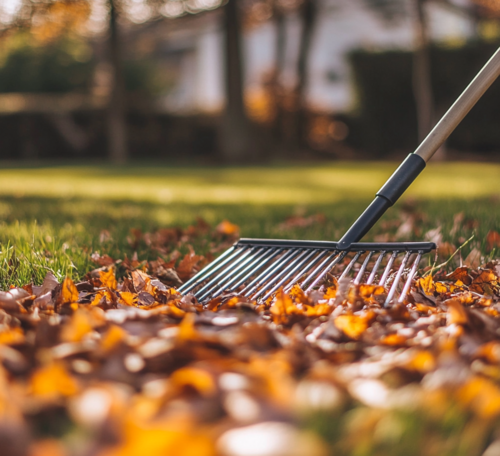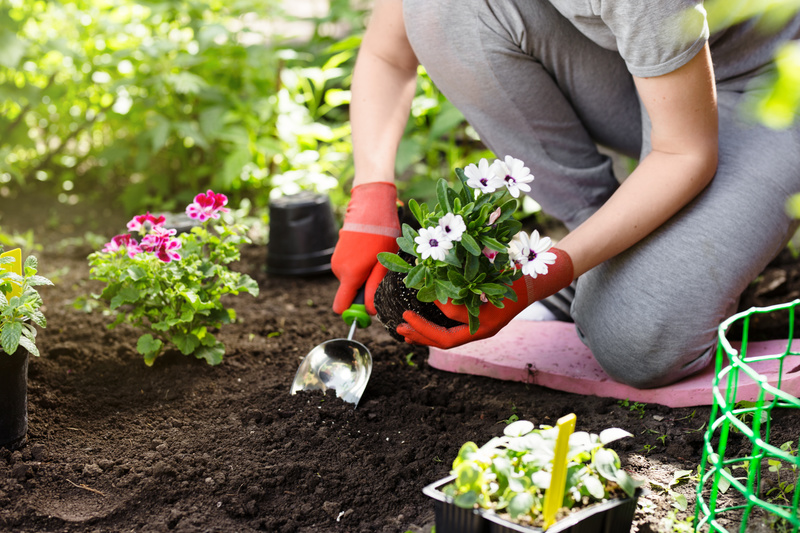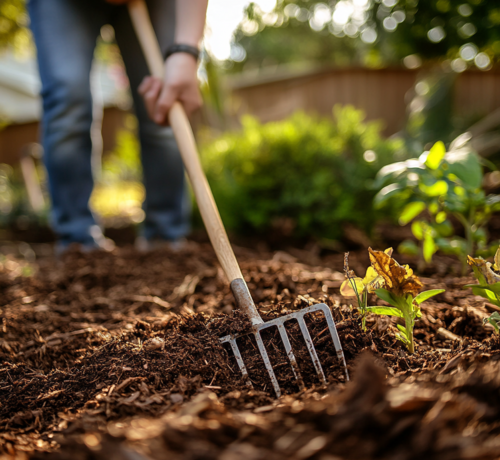Preparing Your Landscaping for Spring
Introduction
As winter fades, it’s time to start preparing your landscaping, lawn, and garden for the warmer months ahead. While winter may seem like a dormant time for outdoor work, there are plenty of tasks you can tackle now to set the stage for a vibrant and thriving landscape come spring.
In this guide, we’ll cover everything you need to do to “wake up” your yard and ensure it’s ready for the new season. From pruning shrubs to mulching and planting, these tips will help you create a beautiful outdoor space.
1. Prune Your Shrubs

When and How to Prune
A Gardener Trims a Dense Green Shrub with Hedge Shears
As temperatures begin to rise, remove any shrub shelters that have been protecting your bushes during the winter. Inspect your shrubs closely for damaged, dead, or diseased branches caused by snow or ice. These should be pruned immediately to prevent further harm to the plant.
- Spring-Blooming Shrubs : Wait until after they flower to prune, as cutting too early can remove buds and reduce their blooms.
- Summer- and Fall-Blooming Shrubs: These can be pruned at the end of winter or very early spring without affecting their flowering cycle.
By removing dead or damaged branches and carefully shaping your shrubs, you’ll encourage healthy growth and a fuller appearance.
2. Clean Up Your Lawn

Tidy Up Debris
A Rake Collects Crisp Autumn Leaves
Even if you raked your yard in the fall , winter’s snow and rain may have left debris such as leaves, sticks, and mud on your lawn. Cleaning up these materials will allow fresh air and sunlight to reach your grass, helping it recover from the dormant season.
Tasks to prioritize:
- Rake leaves, pine needles, and other debris.
- Remove pinecones, branches, rocks, and animal waste.
- Address any waterlogged or compacted areas to promote proper drainage and aeration.
A thorough cleanup will ensure your lawn is ready for fresh growth as the temperatures rise.
3. Prepare Your Flower Beds

Revitalize Existing Beds
For established flower beds with perennials, focus on the following:
- Composting: Add a layer of compost around your perennials to enrich the soil and improve its structure.
- Weed Control: Pull out any weeds that may have sprouted over the winter.
- Dead Growth Removal: Cut back any dead or damaged foliage that wasn’t trimmed in the fall.
Create New Beds
If you’re planning to establish new flower beds , late winter is a great time to prepare the area:
- Smother Grass: Use a smothering method (e.g., tarps or cardboard) to eliminate grass in the designated space.
- Till the Soil: Break up the ground with a tiller to improve soil texture and aeration.
- Raised Beds: Consider building raised beds to provide optimal drainage and protect plants from pests.
Weed Prevention
To prevent weeds from taking over new or existing flower beds:
- Lay down landscaping fabric and cover it with mulch.
- Alternatively, apply a thick layer of mulch directly to the soil to suppress weeds naturally.
4. Start Planting Seeds
Timing is Key
Late winter and early spring are ideal times to plant hardy trees, shrubs, and perennial flowers. These plants can tolerate cool temperatures and establish themselves before the heat of summer.
- Shrubs and Trees: Plant hardy species now for the best results.
- Perennials: Focus on frost-tolerant varieties. Wait to plant tender perennials or annuals until the risk of frost has passed.
For a head start on your garden, consider starting seeds indoors and transplanting them once conditions improve.
5. Refresh Your Mulch

Clean Out Old Mulch
A Gardener Removes Old Mulch to Prep a Garden for Spring
Before adding new mulch, take the time to clean out old, compacted mulch, matted leaves, and debris from your beds. Excess mulch can smother your plants and hinder new growth.
- Remove thick layers of old mulch once the ground begins to thaw.
- Allow the soil to “breathe” and warm up as temperatures rise.
Apply Fresh Mulch
Once warm weather is consistent and your perennials begin to sprout, apply a fresh layer of mulch . Benefits of mulching include:
- Moisture retention in the soil.
- Weed suppression.
- Improved soil temperature regulation.
Aim for a 2-3 inch layer of mulch around your plants, taking care not to pile it directly against stems or trunks.
Final Thoughts on Preparing Your Landscaping for Spring
No matter the size or complexity of your yard, these late winter and early spring landscaping tasks are essential for a healthy, beautiful outdoor space. By pruning shrubs, cleaning your lawn, preparing flower beds, and refreshing your mulch, you’ll set the stage for a lush and vibrant yard all season long.
Need Professional Help?
If you’re in the San Francisco Bay Area and have questions or need assistance with your spring landscaping, contact Arborist Now . Our team of experts can help you bring your vision to life and ensure your yard is ready for the months ahead.
Originally posted on January 11, 2019
We may receive affiliate compensation for some of the links below at no cost to you if you decide to make a purchase.


